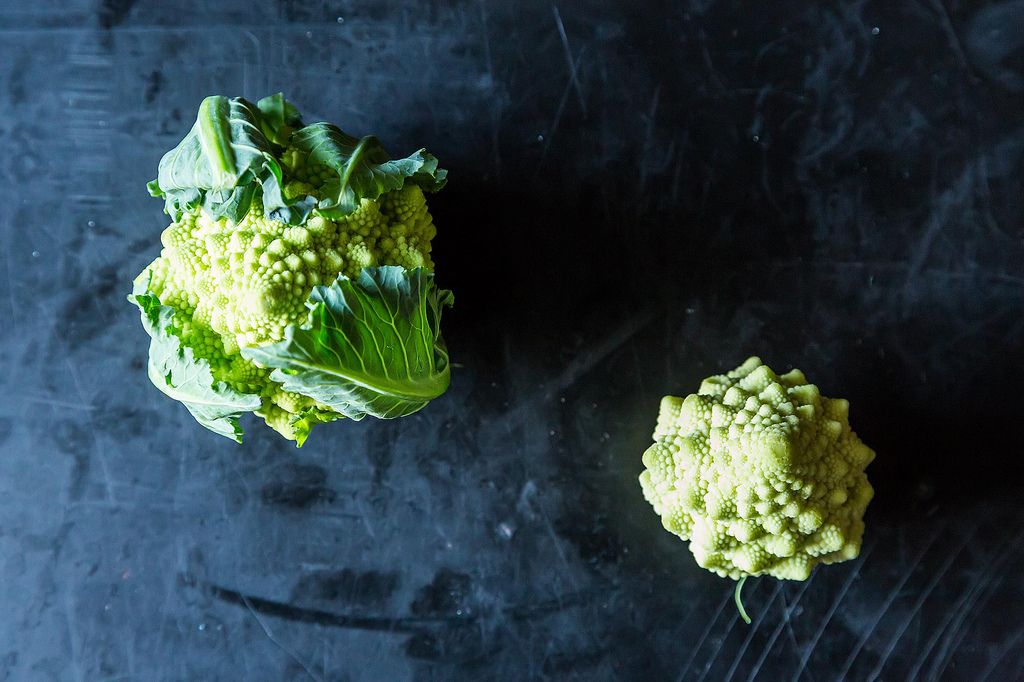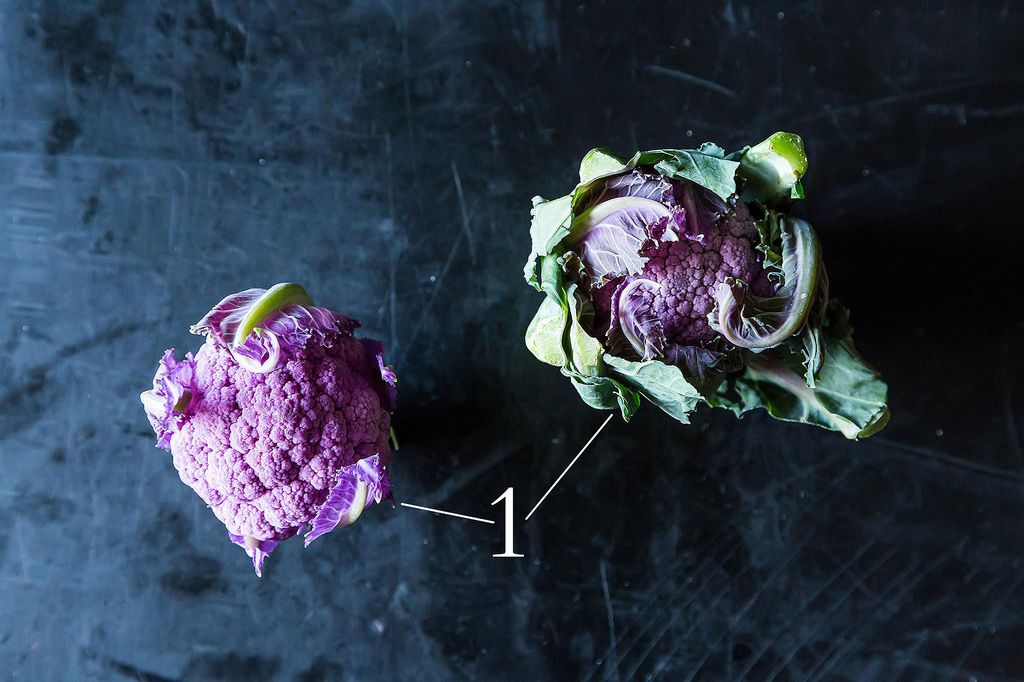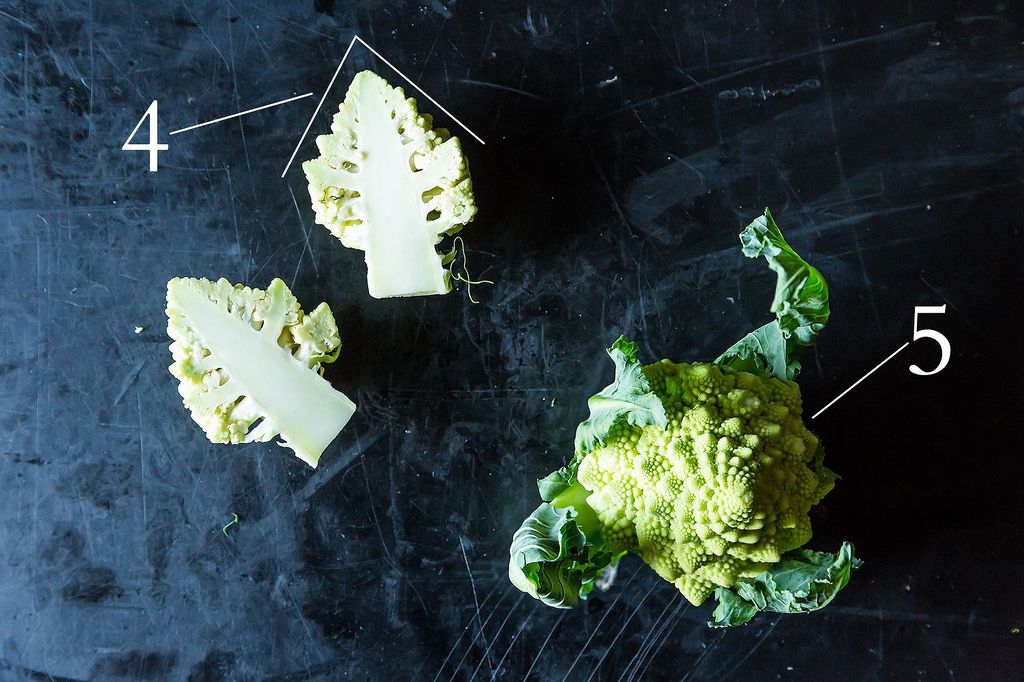Every week we get Down & Dirty, in which we break down our favorite unique seasonal fruits, vegetables, and more.
Today: Did you know that baby cauliflower heads are called buttons? So these baby brassicas are not just cute as buttons, they are buttons.

Both of these are types of cauliflower, and the part we’re used to eating -- the head, or curd -- is the plant’s incipient flower bud (the stalks (3, below) and tender leaves (1, below) around the head are edible too). You might remember that we’ve talked about cauliflower and romanesco before, but because we’re suckers for miniature anything (case in point: last week’s baby beets), we have to discuss them again.
More: How to floret broccoli and cauliflower, the un-messy way.

Even though they're closely related, they look strikingly different. Purple cauliflower has semi-spherical curds (2), while romanesco has pyramidal curds (4). Why? It’s complicated. Purple cauliflower gets its vibrant violet hue from anthocyanins, the same pigments that liven up red cabbage and eggplant’s purple peel. We’ve harped on the fact that most purple vegetables lose their color when cooked, but you’re in luck with purple cauliflower -- it will keep most of its shocking shade even when cooked.
Romanesco has been around since the 16th century in Italy, but can nevertheless be hard to find in the States -- check your local farmers market. Romanesco is already battling having otherworldly looks with its chartreuse coloring and spiralling peaks, but it's also a cauliflower going through an identity crisis. Additional names include romanesco cauliflower, broccoli romanesco, or Roman broccoli (but it’s not broccoli!) -- and it’s sometimes entirely mislabled as broccoflower. But at least romanesco has math lovers on its side. The pattern (5) on a head of romanesco is an approximate fractal, and the number of spirals is always a Fibonacci number.


With both romanesco and purple cauliflower, look for tightly packed heads that are heavy for their size (these tips apply for all types of cauliflower -- baby or not). Pass on any that are bruised or otherwise discolored, and give them the sniff test to avoid any that smell off. Their appearance won’t change very quickly (giving the illusion that they store well), but use them quickly. They’ll lose their sweet taste the longer you store them.
Your best bet for successful storage comes from Elizabeth Schneider: “Place a damp piece of paper towel on the curd, wrap the head in perforated plastic, and refrigerate stem end up (condensation on the curd causes discoloration and decay).” Romanesco and purple cauliflower can be used in any recipe calling for cauliflower, but you might want to choose dishes that highlight their distinctive visual attributes and romanesco's nutty, earthy flavor. We've got ideas to help you enjoy them into next week:
Friday: Spicy Sour Romanesco
Saturday: Romanesco and Purple Cauliflower Pie with Muenster Cheese
Sunday: Roasted Romanesco Curry with Lemongrass and Marcona Almonds
Monday: Purple Cauliflower Soup
Tuesday: Romanesco, Leek, Bay and Chèvre Tart
Wednesday: Roasted Purple Cauliflower and Arugula Salad
Thursday: Cilantro Noodle Bowl with Baby Romanesco
Photo by James Ransom
See what other Food52 readers are saying.